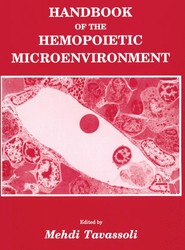(To see other currencies, click on price)
MORE ABOUT THIS BOOK
Main description:
This represents the third volume in a series on cancer markers pub- lished by the Humana Press. The first volume, published in 1980, stressed the relationship of development and cancer as reflected in the production of markers by cancer that are also produced by normal cells during fetal development. The concept that cancer represents a problem of differentiation was introduced by Barry Pierce in describing differenti- ation of teratocarcinomas. Highlighted were lymphocyte markers, alphafetoprotein, carcinoembryonic antigen, ectopic hormones, enzymes and isozymes, pregnancy proteins, and fibronectin. The second volume, published in 1982 and coedited with Britta Wahren, focused on the diagnostic use of oncological markers in human cancers, which were systematically treated on an organ by organ basis. At that time, the application of monoclonal antibodies to the identification of cancer markers was still in a very preliminary stage. A general introduc- tion to monoclonal antibodies to human tumor antigens was given there by William Raschke, and other authors included coverage of those mark- ers then detectable by monoclonal antibodies in their chapters.
Contents:
1 Monoclonal Antibody Defined Antigens on Animal Tumors.- 1. Introduction.- 2. Antigen Expression on Chemically Induced Tumors.- 2.1. Murine Tumors.- 2.2. Rat Tumors.- 2.3. Guinea Pig Tumors.- 3. Use of Monoclonal Antibodies in Tumor Localization and Therapy.- 3.1. In Vivo Localization of Monoclonal Antibodies in Experimental Tumors.- 3.2. Serotherapy Using Antitumor Monoclonal Antibodies.- 3.3. Therapy Using Antitumor Monoclonal Antibodies Conjugated to Cytotoxic Agents.- 4. Conclusion.- References.- 2 Monoclonal Carcinoembryonic Antigen Antibodies.- 1. Introduction.- 2. The Development of Monoclonal CEA Immunoassays.- 2.1. General Concepts of Monoclonal Antibody Methodology.- 2.2. Experimental and Clinical Experience with Monoclonal CEA Antibodies.- 3. Monoclonal Antibodies in the Immunohistological Evaluation of CEA.- 4. Monoclonal Anti-CEA Antibodies in Tumor Imaging.- 5. Immunotherapy with Monoclonal CEA Antibodies.- 6. Summary.- References.- 3 Monoclonal Antibodies to Alphafetoprotein and Regulation of AFP Gene Expression.- 1. Introduction.- 2. Monoclonal Antibodies to AFP.- 2.1. ELISA Using Monoclonal Antibodies.- 2.2. Immune Localization Using Anti-AFP.- 2.3. Radioimmunescintigraphy.- 2.4. Immunotherapy.- 3. Control of AFP Gene Expression.- 3.1. AFP and Albumin Gene Expression During Development.- 3.2. AFP and Albumin Gene Structure.- 3.3. AFP and Albumin Gene Expression and Methylation.- 4. Summary.- References.- 4 Human Chorionic Gonadotropin Detection with Monoclonal Antibodies.- 1. Introduction: hCG Chemistry and Immunochemistry with Antisera.- 2. Description of Monoclonal Antibodies to hCG.- 2.1. Affinity, Isotype, Subclass, and Cross-Reactivity of Antibodies.- 2.2. Topological Mapping of Monoclonal Antibodies: Relative Orientation of Epitopes.- 2.3. Biological Effects of Monoclonal Antibodies Against hCG.- 2.4. Special Properties of Monoclonal Antibodies to hCG: Synergistic Effects.- 3. Immunoassays with Monoclonal Antibodies to hCG.- 3.1. Description of Commercial Immunoassays for hCG Employing Monoclonal Antibodies.- 3.2. Research Immunoassays for hCG.- 4. In Vivo Immunodetection of Tumors.- 5. Immunocytochemistry with Monoclonal Antibodies to hCG.- 6. Summary.- References.- 5 Products of the Major Histocompatibility Complex on Tumor Cells.- 1. Introduction.- 2. Variable Expression of MHC Antigens by Tumor Cells.- 2.1. Inducible MHC Antigens on Murine Tumors Cells.- 2.2. Inducible MHC Antigens on Human Tumors.- 2.3. Implications for Human Tumor Immunology.- 3. Abnormal Expression of MHC Antigens by Tumor Cells.- 3.1. Abnormal Expression of MHC Antigens on Murine Tumor Cells.- 3.2. Abnormal Expression of MHC Antigens on Human Tumor Cells.- 4. Conclusions.- References.- 6 Monoclonal Antibodies: Probes for the Study of Malignant T Cells.- 1. Introduction.- 2. Monoclonal Antibodies as Probes for the Study of Malignant T Cells.- 3. Normal T-Cell Maturation as Defined by Monoclonal Antibodies.- 4. Phenotypic Analysis of Malignant T Cells in Defined Clinical Syndromes.- 4.1. T-Cell Acute Lymphoblastic Leukemia.- 4.2. T-Cell Lymphoblastic Lymphoma.- 4.3. T-Cell Prolymphocytic Leukemia.- 4.4. Cutaneous T-Cell Lymphoma.- 4.5. T-Cell Chronic Lymphocytic Leukemia.- 4.6. IgG Fc Receptor Beraing (TG) Lymphoproliferative Disease.- 4.7. Hairy Cell Leukemia.- 4.8. HTLV-Associated Japanese, Caribbean, and American Adult T-Cell Leukemia/Lymphoma (ATL).- 4.9. Diffuse Lymphomas.- 4.10. T-Cell "Premalignant" Proliferative Disease.- 4.11. Thymoma.- 5. Summary and Conclusions.- References.- 7 Antigenic Markers on Normal and Malignant B Cells.- 1. Introduction.- 2. Antigenic Markers on Normal B Cells.- 3. Antigenic Markers on Malignant B Cells.- Bibliography for Further Reading.- 8 Nonlymphoblastic Leukemia-Associated Antigens Identified by Monoclonal Antibodies.- 1. Introduction.- 2. Myeloid-Associated Antigens Expressed by Normal Hematopoietic Cells and Cell Lines.- 2.1. Monoclonal Antibodies to Antigens Expressed Primarily on Granulocytes.- 2.2. Monoclonal Antibodies to Antigens Primarily Expressed by Monocytes.- 2.3. Monoclonal Antibodies to Antigens Associated with Granulocytes and Monocytes.- 2.4. Monoclonal Antibodies to Antigens Primarily Expressed on Immature Granulocytes and Monocytes.- 2.5. Antibodies Against Erythroid and Megakaryocytic Lineage-Associated Antigens.- 2.6. Myeloid-Associated Antigens Expressed by Hematopoietic Progenitors.- 2.7. Expression of Myeloid-Associated Antigens During Ontogeny and Phylogeny.- 2.8. Myeloid-Associated Antigens on Human Myeloid Cell Lines.- 3. Expression of Myeloid-Associated Antigens by Myeloid Leukemias.- 3.1. Diagnosis of Acute Nonlymphoblastic Leukemia Using Monoclonal Antibodies: Discrimination from ALL.- 3.2. Subsets of Acute Nonlymphoblastic Leukemia Defined by Monoclonal Antibodies.- 3.3. Prognostic Implications of Cell Surface Phenotype.- 4. Monoclonal Antibodies as Probes of Leukemic Stem Cell Phenotype and Differentiation.- 5. Therapy of Myeloid Leukemias Using Antibodies to Leukemia-Associated Antigens.- 6. Conclusions.- References.- 9 Monoclonal Antibodies as Probes for the Molecular Structure and Biological Function of Melanoma-Associated Antigens.- 1. Introduction.- 2. Immunological Characterization of Monoclonal Antibodies.- 3. Immunochemical and Molecular Profiles of Human Melanoma-Associated Antigens.- 3.1. Glycoproteins.- 3.2. Glycolipids.- 4. Biosynthesis and Structure of Melanoma-Associated Antigens.- 5. Function of Melanoma Antigens Defined by Monoclonal Antibodies.- 5.1. In Vitro Studies.- 5.2. In Vivo Studies.- 6. Conclusions.- References.- 10 Lung Cancer Markers as Detected by Monoclonal Antibodies.- 1. Introduction.- 2. Methods.- 3. Characterization Studies.- 4. Monoclonal Antibodies to Small-Cell Lung Cancer.- 4.1. Analysis of Antigen Expression in Small-Cell Lung Cancer.- 5. Monoclonal Antibodies to Nonsmall-Cell Lung Cancer.- 6. Monoclonal Antibodies to Defined Proteins of Lung Cancer.- 7. Imaging Lung Cancer with Monoclonal Antibodies.- 8. Monoclonal Antibodies with Therapeutic Applications.- 8.1. In Small-Cell Lung Cancer Variants.- 8.2. In Small-Cell Lung Cancer.- 9. Summary.- References.- 11 Human Breast Cancer Markers Defined by Monoclonal Antibodies.- 1. Introduction.- 2. Generation of Monoclonal Antibodies.- 3. Mammary Carcinoma Tissue as Immunogen for the Preparation of Monoclonal Anbibodies to Carcinoembryonic Antigen (CEA).- 4. Identification and Purification of Mammary Tumor-Associated Antigens.- 5. Antigenic Modulation and Evolution Within Human Mammary Carcinoma Cell Populations.- 6. Differential Reactivity of a Monoclonal Antibody (DF3) with Human Malignant Vs Benign Breast Tumors.- 7. Radiolocalization of Human Mammary Tumor Transplants in Athymic Mice by a Monoclonal Antibody.- 8. The Use of Recombinant Interferon to Enhance Detection of Human Carcinoma Antigens by Monoclonal Antibodies.- References.- 12 Antigens of Normal and Malignant Human Exocrine Pancreatic Cells.- 1. Introduction.- 2. Human Pancreatic Cell Antigens Defined by Polyclonal Antibodies.- 2.1. Polyclonal Antibodies Elicited to Normal Adult Pancreas or to Pancreatic Secretions.- 2.2. Polyclonal Antibodies Elicited to Fetal Pancreas.- 2.3. Polyclonal Antibodies Elicited to Pancreatic Tumors.- 3. Pancreatic Antigens Defined by Monoclonal Antibodies.- 3.1. Monoclonal Antibodies Elicited to Normal Pancreatic Cell Antigens.- 3.2. Monoclonal Antibodies Reactive with Pancreatic Tumor-Associated Antigens.- 4. General Discussion.- References.- 13 Monoclonal Antibodies to Human Prostate Cancer-Related Antigens.- 1. Introduction.- 2. Cell Surface Antigens of Established Prostate Tumor Lines.- 3. Prostate Membrane-Associated Antigens.- 4. Prostate Antigen.- 5. Prostatic Acid Phosphatase.- 6. Summary.- References.- 14 Monoclonal Antibodies to Renal Cancer Markers.- 1. Introduction.- 2. Mab S4.- 3. Mab S22.- 4. Mab S23.- 5. Mab S6.- 6. Use as Markers of Proximal Tubular Cells.- 7. Ability to Discriminate Renal from Nonrenal Cancers.- 8. Subclassification of Renal Cancer.- 8.1. gp/20nr.- 8.2. Subclassification of gp120nr+ Renal Cancers.- 9. Correlation of Antigenic Phenotypes and Clinical Parameters.- 10. Summary.- References.- 15 Immunochemistry of Human Teratocarcinoma Stem Cells.- 1. Introduction.- 2. Stem Cells of Human Teratocarcinomas.- 2.1. Human Embryonal Carcinoma Cells.- 2.2. Surface Markers of Human EC Cells.- 2.3. Intermediate Filaments.- 3. Markers of Differentiation.- 3.1. The Nature of Differentiation.- 3.2. The Disappearance of EC Cell Markers.- 3.3. The Appearance of New Cell Markers.- 4. Conclusions.- References.- 16 Use of Monoclonal Antibodies in Neurobiology and Neurooncology.- 1. Introduction.- 2. Markers of Central and Peripheral Nervous System (PNS) Tumors Defined by Mabs.- 2.1. Biochemically Defined Markers.- 2.2. Shared Nervous System-Lymphoid Cell Markers.- 2.3. Shared Neuroectodermal-Oncofetal Markers.- 2.4. Putative Tumor-Restricted Markers.- 2.5. Markers of Interest Defined in Animal Model Systems.- 3. Current and Prospective Use of Marker-Mab Systems.- 3.1. The Problem of Antibody Localization and Delivery.- 3.2. The Problem of Antigenic Heterogeneity.- 3.3. Current Use of Single Marker-Mab Systems.- 3.4. The Use of Mab Panels.- 4. Summary and Prospects.- References.- 17 Human Monoclonal Antibodies: Humoral Immune Response in Patients with Cancer.- 1. Introduction.- 1.1. Serological Evidence of Tumor Immunity in Humans.- 1.2. Clinical Evidence of Tumor Immunity in Humans.- 1.3. In Vivo Applications of Human Monoclonal Antibodies.- 2. Approaches to the Generation of Human Monoclonal Antibodies.- 2.1. Immortalization of B Lymphocytes by Epstein-Barr Virus.- 2.2. Strategies Using the Hybridoma Technology.- 3. Further Experimental Strategies.- 3.1. The EBV-Hybridoma Approach.- 3.2. Growth of Nontransformed B Cells in Culture.- 3.3. Preselection of B Cells In Vitro: Systems for In Vitro Stimulation by Antigen.- 3.4. Fusion Partners and Fusion Conditions.- 3.5. Immunoglobulin Genes.- 4. Human Monoclonal Antibodies Derived from Lymphocytes of Patients with Cancer.- 5. Conclusions.- References.
PRODUCT DETAILS
Publisher: Springer (Humana Press Inc.)
Publication date: October, 2011
Pages: 428
Weight: 682g
Availability: Available
Subcategories: Pathology
From the same series















